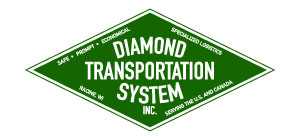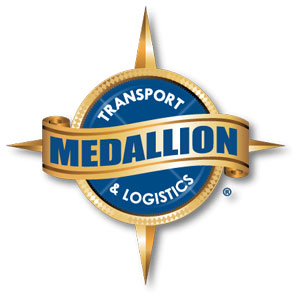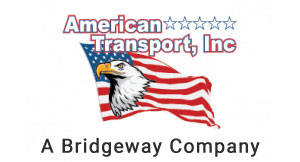Trailer Dimensions: How Wide Can a Tractor Trailer Be?
Without tractor trailers, America’s supply chain would grind to a halt. From construction materials to groceries, the U.S. economy depends on trucks to move freight every single day. But when it comes to regulations, one of the most common questions shippers ask is: how wide can a tractor trailer be?
The tractor trailer max width is one of the most important safety and legal considerations in hauling freight. While trailer length and height can vary more widely, width is tightly controlled to keep highways safe and freight moving efficiently.
What Is the Standard Width for a Tractor Trailer?
The federal government sets limits on tractor trailer max width to ensure safety and consistency across the national highway system.
- Standard maximum width: 102 inches (8.5 feet)
- Hawaii exception: 108 inches
It’s important to note that the 102-inch tractor trailer max width applies to interstates and major U.S. highways. On many state and local roads, the maximum may drop to just 96 inches. This means that drivers and fleet managers must carefully plan routes to remain compliant with federal, state, and even local guidelines.
So, when asking how wide can a tractor trailer be, the short answer is 102 inches on most highways, with exceptions only under certain conditions or with permits.
Can a Tractor Trailer Be Wider Than 102 Inches?
Technically, yes, but it comes with restrictions. The standard tractor trailer max width can be exceeded with the use of special permits. However, what usually exceeds the limit is not the trailer itself, but the load it carries.
- Enclosed trailers cannot exceed 102 inches due to their fixed walls.
- Flatbeds, step-decks, and goosenecks can carry wider loads that extend beyond the trailer sides.
When this happens, the shipment is classified as an oversized load. Oversized freight requires specific precautions, including signage, flags, pilot cars, and state-issued permits.
Oversized Loads: Beyond the Tractor Trailer Max Width
Any time a load extends beyond the standard tractor trailer max width, it falls into oversized or even “superload” territory. Here are common width thresholds that trigger additional regulations:
- Over 102 inches: Oversized load permit required
- Over 144–168 inches: Special permits and routing requirements apply
- Over 192 inches: Considered a superload, requiring extensive planning, permits, and escorts
When considering how wide can a tractor trailer be with an oversized shipment, shippers must also factor in bridge widths, lane sizes, and state-by-state rules that impact safe transport.
Special Requirements for Oversized Loads
If you’re transporting a shipment that exceeds the tractor trailer max width, you’ll need more than just a permit. Most states require safety and escort measures, which may include:
- Pilot/Escort Vehicles: Loads above certain widths require one or more pilot cars.
- Law Enforcement Escorts: Some states require police escorts for superloads.
- Signage & Flags: “Oversized Load” banners, red or orange flags, and sometimes lights are required to warn other drivers.
- Restricted Travel Times: Oversized loads may be restricted to daylight hours, with no travel allowed on weekends or holidays in some states.
Because regulations vary by jurisdiction, the answer to how wide can a tractor trailer be often depends on the specific state, the route, and the type of freight being hauled.
Why Professional Oversized Hauling Matters
While the legal tractor trailer max width is set at 102 inches, the reality is that oversized and wide loads are a daily part of American commerce. From industrial equipment to prefabricated buildings, not everything fits neatly within standard trailer dimensions.
But hauling oversized loads requires expertise:
- Securing state permits
- Coordinating pilot cars and escorts
- Planning compliant routes
- Managing schedules around travel restrictions
Simply put, knowing how wide can a tractor trailer be is just the starting point. Execution requires experience and careful logistics.
Osage Specialized Transport: Experts in Oversized Freight
At Osage Specialized Transport, we have more than 40 years of experience handling oversized and overweight freight across the U.S. Our team understands the complexities of tractor trailer max width regulations and the permitting process required to move extra-wide cargo safely and legally.
From route planning to compliance with state laws, we manage every detail so you can focus on your business. Whether you need to move construction machinery, energy equipment, or other bulky freight, Osage has the expertise to deliver.
Contact Osage Specialized Transport today to learn more about our specialized hauling services and how we can handle your next oversized shipment.
Reader interactions
5 Replies to “Trailer Dimensions: How Wide Can a Tractor Trailer Be?”
Comments are closed.
















[…] of heavy vehicles and machinery that operates on wheels or tracks. Included are front-end loaders, tractors, power shovels and bulldozers, each of which weighs more than 10,000 […]
[…] Official Site: https://osagespecial.com/2020/03/how-wide-can-a-tractor-trailer-be/ […]
[…] Official Site: https://osagespecial.com/2020/03/how-wide-can-a-tractor-trailer-be/ […]
[…] Official Site: https://osagespecial.com/2020/03/how-wide-can-a-tractor-trailer-be/ […]
[…] Official Site: https://osagespecial.com/2020/03/how-wide-can-a-tractor-trailer-be/ […]